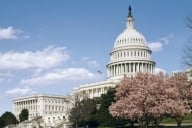You have /5 articles left.
Sign up for a free account or log in.

istockphoto.com/AlexRaths
The billions of dollars in cuts to federal research funding earlier this year are prompting science researchers across the country to lay off researchers, close laboratories and scramble to find other sources of funding.
Researchers said the budget cuts, caused by across-the-board reductions known as sequestration, are threatening important scientific investigations and pushing young scientists out of the field. Those worries are compounded by the uncertainty of how much money will be available for research in the coming fiscal year, which could bring even deeper cuts.
Already this year, the dire warnings from research officials and higher education advocates about what sequestration would mean for research are beginning to play out. More than half of researchers who responded to a recent survey by the American Society for Biochemistry and Molecular Biology said they either had laid off or expected to lay off researchers as the result of declining federal science funding. Large majorities of survey respondents also said they had seen their grant money decrease, experienced difficulty in obtaining new funding, and spent increasingly more time writing grant applications.
Sequestration this year cut the National Institutes of Health’s budget by $1.55 billion, forcing the agency to fund 703 fewer competitive research grants than it did in 2012.
One researcher affected by the cuts is Thomas Michel, a professor of medicine and biochemistry at Harvard Medical School. Michel said he had to contract the size of his laboratory in the cardiovascular division at Brigham and Women’s Hospital in Boston after the NIH did not renew a grant that “would have easily been funded under the levels of support previously available.”
Without the approximately $250,000 in funding the grant would have provided, he said he had to reduce his research team from 10 to four people, laying off postdoctoral researchers, a graduate student, and a medical resident-in-training.
In some cases, sequestration is being blamed for the closure of entire laboratories. At the University of Chicago’s department of surgery, seven researchers lost their jobs after three small labs closed, according to Karl S. Matlin, professor of surgery and vice chairman of research.
The heads of two of the three laboratories that closed, Matlin said, had submitted grant proposals to the NIH that were ranked in the top fifth of submissions but were not funded because the cutoff had been reduced as a result of the sequester.
Matlin said he was denied funding for a similarly ranked grant proposal for approximately $300,000 that would have allowed his lab to study treatments for renal ischemia—the reduction of blood flow to the kidney after surgery or a traumatic injury that is not well-understood by scientists. Matlin’s lab remains open through other grants, but he had to lay off three people -- a lab technician, a postdoc, and an experienced assistant professor.
Matlin and others said they worried that the reductions in research funding -- and the uncertainty of money available for future years -- had already begun a brain drain in biomedical research.
“The real tragedy is that we are irreversibly losing good people. Young people don’t look at this as a desirable profession,” said Matlin, noting that one of the experienced researchers he laid off left the field for an office job at a medical association.
Michel, the Harvard professor, said that throughout his career he’s experienced cycles of growing and waning support from the NIH and other federal agencies, but the current funding situation -- with no clear relief on the horizon -- will have a long-term effect on the profession.
“I fear that we’re going to be losing a generation of bright young scientists who might take their talents in other directions,” he said. “I’m seeing it already in the choices that people make as they complete their clinical training now, but it’ll trickle down to people in graduate school and undergraduates.”
While the NIH represents the largest source of federal research funding, grants at other agencies have also been cut because of sequestration. The National Science Foundation, for instance, said that it expected to reduce the total number of new research grants by about 1,000 this year.
Researchers who rely on other sources of funding scattered throughout the federal government have also taken a hit. At Arkansas State University, about 30 researchers will be laid off by the end of October because grants from the Education Department and Defense Department were not renewed, according to John Pratte, dean of the College of Sciences and Mathematics.
Aside from pushing young scientists away from research, the reduction in federal funding also has the potential to create problems for those researchers trying to climb the ranks within academe. The increasing scarcity of federal funding opportunities may make it more difficult for faculty to obtain tenure, according to Jonathan S. Dordick, vice president for research at Rensselaer Polytechnic Institute.
“In the end, you’re weakening young faculty members’ ability to get their research off the ground, and in doing so, you’re potentially weakening their tenure case,” he said. “It’s tough enough anyway.”
Dordick said that RPI has not had to close any labs since the university’s overall level of federal research funding has remained constant this year. But, he said, as the NIH and other federal agencies award fewer grants, the university expects to reduce the number of researchers through attrition.
Beyond the loss in research funds, the uncertainty over how severely budgets will be cut in the coming years is creating problems on campuses, Dordick said.
“It really reduces the ability of faculty to plan,” he said. “It’s hard to do other things when you’re fighting to get any money into the laboratory.”
It’s not yet clear how much money federal agencies will have to fund research in the coming fiscal year that begins October 1, but it is possible that this year's budget cuts could continue or even deepen.
Unless Congress acts to stop it, the sequester will continue into the new fiscal year. However, while this year's sequester forced blunt, across-the-board cuts earlier this year, lawmakers now will have more flexibility on how they can distribute the cuts across federal agencies and programs. Still, the sequester for the coming fiscal year sets a cap on total discretionary spending that is below this year's level, so rearranging how reductions are distributed will be a high-stakes, zero-sum game.
The House and Senate have each proposed budgets that are about $90 billion apart, so it appears unlikely that Congress will reach an agreement on how to fund the government before the October 1 deadline. Lawmakers are expected to immediately pass a stopgap spending measure that keeps the government running at the same level of funding, but they will still have to eventually find areas to cut under the requirements of the sequester. The negotiations will be further complicated by discussions about increasing the government's limit on borrowing money, the debt ceiling, which the Treasury Department has said will run out this fall.








